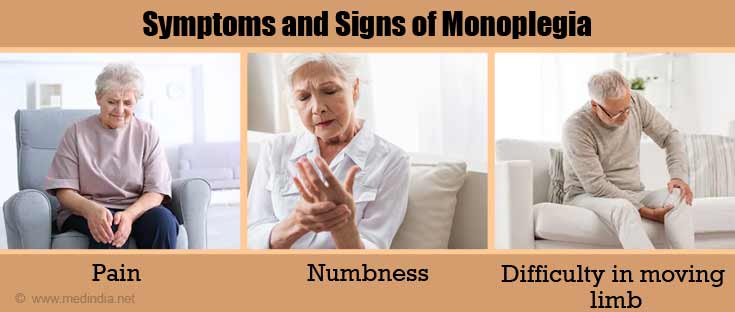What are the Causes of Monoplegia?
It should be noted that paralysis, in any form, occurs due to the inability of the brain to receive, send or interpret nerve impulses or signals. The causes differ in different age groups, as well as on the onset, progression and duration of the disease.
The major causes of monoplegia include the following:
- Cerebral palsy: This is a congenital disorder of movement, muscle tone and posture.
- Stroke: This is a life-threatening condition characterized by rapid death of neuronal cells in the brain due to cut-off of the oxygen supply, caused by blockage or rupture of an artery.
- Brachial plexopathy: This is a type peripheral neuropathy caused by damage to the brachial plexus, which is located on either side of the neck where the nerves branch and enter the arms on each side.
Other causes include the following:
- Brain tumor / hematoma: These conditions can cause nerve compression.
- Nerve trauma / inflammation: Any kind of nerve trauma can cause inflammation of the nerves.
- Nerve impingement: Also known as ‘pinched nerve’, this occurs due to compression of the nerve by surrounding structures.
- Multiple sclerosis (MS): An autoimmune disease in which the immune system attacks and destroys the protective covering of the nerves.
- Brown - Séquard Syndrome (BSS): A rare neurological syndrome, which occurs due to spinal cord lesions resulting in paralysis.
- Mononeuritis multiplex: Also known as mononeuropathy multiplex or multifocal neuropathy, it is a type of peripheral neuropathy, which occurs due to damage to two or more nerve areas.
- Motor neuron disease: A rare condition in which the nerves of the brain and spinal cord (specifically the motor neurons) degenerate, often causing paralysis.
- Lumbar radiculopathy: Also known as sciatica, it is a condition in which pain originating in the lumbar (lower back) region radiates down the sciatic nerve, affecting one or both legs.
- Aneurysm: A condition, in which a portion of an artery becomes weakened, bulges out and even ruptures.
What are the Symptoms and Signs of Monoplegia?
The major symptoms and signs of monoplegia include the following:
- Difficulty in moving the limb
- Curling of hands or toes
- Stiffness of feet
- Weakness or limpness
- Numbness
- Loss of muscle control
- Decreased sensation over the affected limb
- “Electrical” sensation / pins and needles
- Generalized pain / shoulder pain
- Headache








